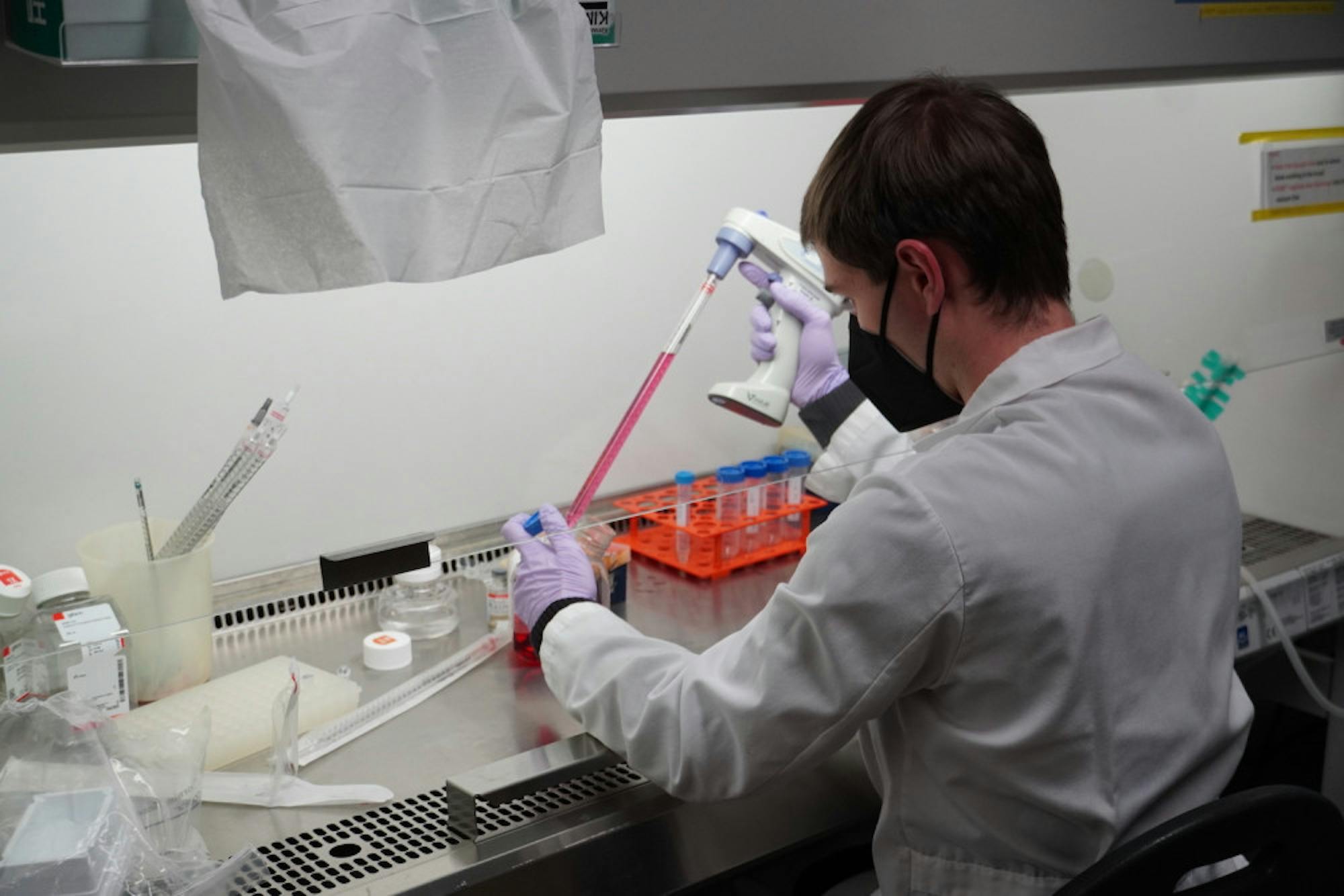Lab grown meat used to be something out of a science fiction movie, but Tufts has been at the forefront of progress to make it a reality. In 2021, the United States Department of Agriculture awarded Tufts a $10 million grant which helped found the Tufts University Center for Cellular Agriculture. The Center for Cellular Agriculture is a partnership across multiple different Tufts schools, with researchers who specialize in tissue engineering, nutrition and livestock. In October, the center announced the creation of the TUCCA Consortium, which will see Tufts partner with different companies and nonprofits to solve fundamental challenges in developing lab-grown meat.
Cellular agriculture is the process of making real animal meat in a lab. The process starts with extracting a small cell sample from an animal. Those cells are then grown in a large device called a bioreactor.
Most companies working in the field keep their information confidential which can make progress more difficult because so little information is available to anyone trying to start out in cellular agriculture. There has been industry funding for cellular agriculture for many years now, and this is starting to yield results. One of the companies partnered with the consortium — Upsides Foods — recently got FDA clearance for its lab-grown chicken. They need clearance from the USDA, but then their product can be brought to market.
However, academic research into cellular agriculture has been a more recent development — the USDA grant Tufts received in 2021 was the first federal grant at a major university that funded advancements in cellular agriculture. Since industry research can be kept private as intellectual property, researchers in academia are trying to catch up.
“Academic research is lagging and I think this [center] is a great opportunity to really try to bring [academia and industry] together,” Glenn Gaudette, chair of the Department of Engineering at Boston College, said. The consortium has gathered people across the industry and academia to research fundamentals — such as serum-free media that the cells can grow in and edible films for the cells to grow on — while publishing their results, so this information is available to anyone wanting to advance cellular agriculture.
TUCCA Associate Director Christel Andreassen notes that there has been a lack of collaboration in the field of cellular agriculture.
“We’re all working towards the same goal, but we’re not working together,” Andreassen said. This consortium helps address this problem by creating a collaborative space across institutions.
The consortium partners with different companies or nonprofits, including BioFeyn, Cargill, CellX, the Good Food Institute, MilliporeSigma, ThermoFisher Scientific, TurtleTree, Upside Foods and Vow. These companies pay annual membership fees to fund the consortium’s research, and they get to vote on what research to pursue based on project plans written by students and faculty. The research gets funded for a year and after that, the research can either be renewed or that researcher can begin a new project.
Since cellular agriculture is so multifaceted, the research being funded by the industry partners involved collaboration across the different Tufts departments in the Center of Cellular Agriculture. The animal cells for the meat are extracted from animals at the Cummings School of Veterinary Medicine. The School of Engineering is most involved in the development of the actual tissue, with some biology and chemistry professors involved. Some of the professors in the Friedman School of Nutrition Science and Policy research the nutritional value and bioavailability of foods, while other professors look more into the sustainability of a product and how it would be perceived by consumers.
In order for all this research to occur, all these groups need to share data. For example, some professors at the School of Nutrition run life cycle analyses where they assess the environmental impact of the product.
To do this, they need to know all the components that go into a product and where they are sourced from. They also need to know how the product was created and what equipment was used, so the researchers in the School of Engineering need to provide access to their entire production process.
This relationship also goes the other direction with the School of Nutrition sharing information with the School of Engineering. Professors at the School of Nutrition can run these life cycle analysis on different possible components to let the scientist in the School of Engineering know which component would be best for the environment or can be most easily sourced.
All of these studies, especially the environmental ones, require data and access to the science. As Dr. Andreassen says, with all the companies researching cellular agriculture: “There’s loads of data out there. They’re just not giving it up.” In this consortium, data is shared between groups at Tufts as well as with other universities that are partnered with Tufts through the USDA grant. This sharing of information across fields and institutions allows more holistic analysis of the material.
In the long term, the Center for Cellular Agriculture hopes to continue expanding its research and industry partnerships, but also to train the next generation of scientists working in cellular agriculture.
Tufts currently offers a Certificate in Cellular Agriculture for students pursuing a Ph.D. at Tufts, so these students running the research for the Center of Cellular Agriculture can take classes relating to their research. Tufts also hopes to establish an internship program for students interested in having an opportunity to work at the companies in the consortium to get industry experience.
The Center of Cellular Agriculture is creating opportunities for students to take classes and do research in cellular agriculture so they are prepared to help shepard this new field from a material found in a lab to a tasty, sustainable and easily available item that can be found at restaurants and grocery stores.






